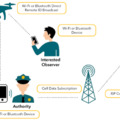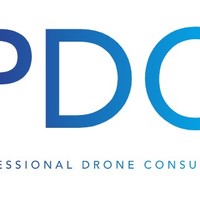Several websites have already written that direct remote identification (DRI) will become mandatory for many drones in 2024. In this post, we will go deeper into this topic to see what DRI is about, what it provides and what regulation applies to it.
The proliferation of drone use provides not only high-tech, cheap and safe solutions to many problems but also raises issues in many aspects of our lives. These issues concern aviation safety and also data protection or privacy. Therefore, it is crucial to have solutions to reduce and mitigate risks and unintended effects caused by drones.
The aviation safety concerns stem from the simple fact that drones and manned aviation use the same airspace, creating the chance of mid-air collision or a near-miss. These risks may exist not only between a drone and a regular aircraft but also among drones. Privacy issues emerge when an operation with drones is conducted over a privacy-sensitive area (either private or industrial) or in an improper way, and the use of any recordings made by the drone during such flights may harm or negatively affect people’s lives.
As the detection of drones may not be effective by means considered regular in manned aviation (e.g. radar), new technical solutions are required to enable all stakeholders to detect other aircraft (may it be manned or unmanned) flying operating in the vicinity and so may pose a risk. Human senses may do the detection in VLOS, but they do not provide any additional information other than the fact that a flight is occurring. The DRI might be a good solution, however, which - as the Delegated Regulation (EU) 2019/945 (Delegated Regulation) states – is a: „system that ensures the local broadcast of information about a UA in operation, including the marking of the UA, so that this information can be obtained without physical access to the UA”.
DRI might be built-in or sold as an add-on for drones already put on the market (for the sake of retrofit and upgrade). The DRI ensures that the data in connection with the flight of the UAS are broadcast within a specific range. The DR shall allow:
- the upload of the UAS operator registration number (following a consistency check with the national registry);
- the periodic transmission of at least the following data, in real-time during the whole duration of the flight, in a way that it can be received by existing mobile devices:
- the UAS operator registration number and the verification code provided by the Member State during the registration process unless the consistency check defined in point(a) is not passed;
- the unique serial number of the UA compliant with paragraph 4 or, if the UA is privately built, the unique serial number of the add-on, as specified in Part 6 of the Annex;
- the time stamp, the geographical position of the UA and its height above the surface or take-off point;
- the route course measured clockwise from true north and ground speed of the UA;
- the geographical position of the remote pilot;
- an indication of the emergency status of the UAS.
These data may be accessible by using a specific application downloaded to a mobile device (via Bluetooth or WiFi) within the range of DRI. So, the remote pilots can detect and follow the flight of other drones within the range of the DRI.
It is called direct because the transmission of data occurs in real-time when using, without the inclusion of any broadcasting service provider, and it is accessible by everybody (after downloading the proper application, obviously). The DRI solution is based on the EN4709-002 standard, which is also intended to become a community-harmonised standard.
DRI is useful not only for remote pilots but also for law enforcement bodies as the DRI might help to fasten the control and - if necessary prosecution - of operators and identify any privacy intrusions, still to a certain level only - as the range of DRI is limited to the technology is used. The following chart shows how the DRI ecosystem is built up and works.
It is essential that the accessibility of DRI is not unlimited; only law enforcement may have access to specific personal data (e.g. name), providing that the members of the public may not identify the UAS-operator directly, avoiding ‘private justice’. As DRI is a so-called cooperative solution, only those users who meet the criteria and adequately use the DRI can be detected as operators. Others may be detected by other C-UAS (counter drone) technologies that law enforcement may use exclusively. Such technologies may also be built to protect critical infrastructures. In Hungary, the Minister of Defense is entitled to order the operators of the critical infrastructure to build up C-UAS for protection against drones.
Technologies similar to DRI exist in other jurisdictions outside of the EU. It is called Remote Identification in the US, while the only difference is the content of transmitted data (in the US, the drone itself is the subject of the registration, not the operator).
The DRI will be mandatory starting from 1 January 2024, but not for all drones.
In the OPEN category, the untethered drones falling into UA Class C1 to C3 must be equipped with direct remote identification. (In the case of these drones, having a built-in DRI is a precondition to being put on the market, so the existence of the DRI is inspected during the mandatory conformity assessment with the inclusion of a Notified Body.) According to EU regulations, the UAS operator is responsible for ensuring that the DRI is functional throughout the flight, while the remote pilot is obligated to operate it.
The untethered drones with class identification labels C5 and C6 UA Classes are also subject to having DRI, just like all drones operated in the specific category. According to UAS.SPEC.050 of the Annex to the Implementing Regulation (EU) 2019/947, the UAS operator shall ensure that the drone is installed with active and up-to-date remote identification. According to UAS.SPEC.060, the remote pilot checks if the direct remote identification is active and up-to-date.
As we referred, the DRI might either be built in by the manufacturer or be purchased and installed as an add-on by the UAS operator. It is important to know that the remote ID add-ons, similar to Class Identified drones in the open category and standard scenarios (C0 to C6 UA classes), are subject to market surveillance. Therefore, non-conform products may reported to national market surveillance authorities.
The list of approved drones with inbuilt DRI and approved remote ID add-ons is available on EASA’s (European Union Aviation Safety Agency) website by clicking on this link. It is recommended to check this website before purchasing a product, and it is always mandatory to follow the manufacturer’s instructions and manuals.
According to Part 6 of the Annex to Delegated Regulation, the manufacturer is obligated to provide instructions on how to install the module (the remote ID add-on) on the UA and how to upload the UAS operator registration number. If you find a product that does not have these instructions, that should be reported to market surveillance authorities.


